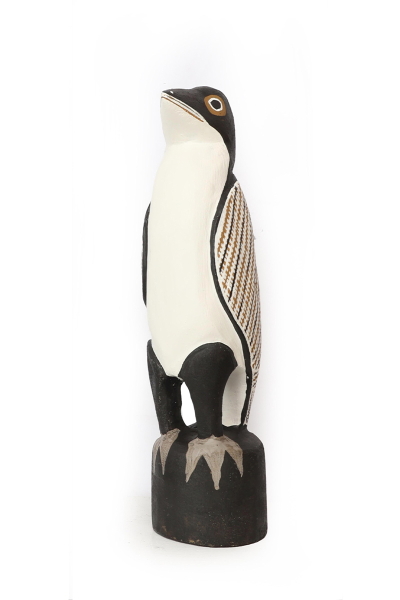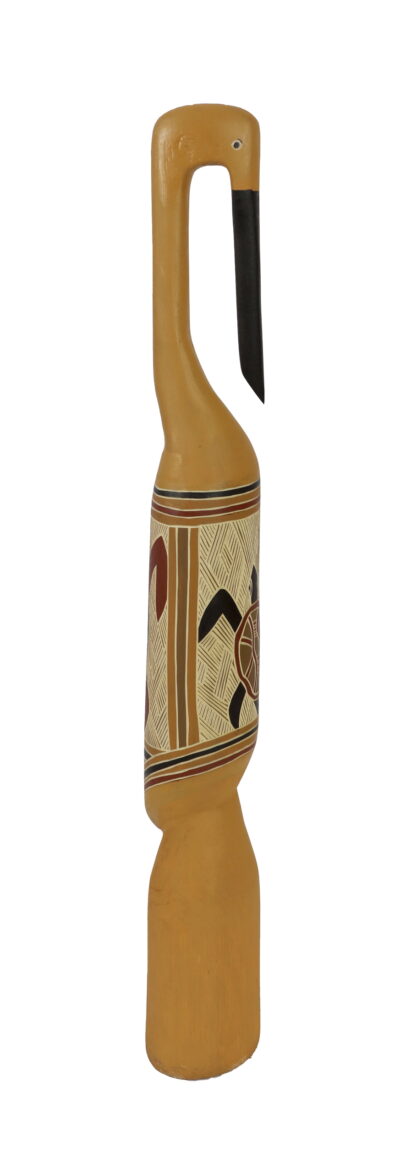Description
djuldjul gurruwiwi
Earth pigments on Wood
9.5 x 39 cm
Year: 2024
ID: 7456-24
Wayin
Wayin translates as bird. Within the spiritual law of North East Arnhem land it is accepted that the spirit of deceased people is guided to its appropriate destination by a bird from that clan.
This work is a decorative piece made from renewable wood which is usually harvested from the tree in the dry season. Preferred woods are Maḻwan (Hibiscus Tiliaceus), Gunhirr (Blind-Your-Eye-Mangrove), Wuḏuku (mangrove wood), Barraṯa (Kapok). The first activity is to enter the monsoon vine thicket and cut the wood and carry it back to the vehicle. Often a long hike through prickly vines and scrub.
The wood is skinned and left to dry for a short period. It is then shaped by knife or axe. After the surface is sanded smooth a layer of red paint is usually the first to go down. The paints used are earth pigments. The red (meku), yellow (Gaŋgul) and black (gurrŋan) are provided by rubbing rocks of these colours against a grinding stone and then adding water and PVA glue in small quantities. Traditionally a plant resin would have been used as a fixative instead. A new batch of paint is prepared or renewed every few minutes as it dries or is used up.
After an outline of the composition is laid down the marwat or crosshatching commences. This is applied using a brush made of a few strands of straight human hair usually from a young woman or girl. The artist charges the marwat (brush) with the paint and then paints away from themselves in a straight line. Each stroke requires a fresh infusion of pigment.
The last layer to be applied is almost always the white clay or gapan which is made from kaolin harvested from special sites. This also has water and glue added after being crushed into a fine powder. An alternative to painting the cross hatching is to use a razor to incise fine lines and reveal the light coloured wood underneath.
Most works are made in the homelands as a means of obtaining extra income to defray the huge expenses of travel and freight residents suffer from.






Reviews
There are no reviews yet.